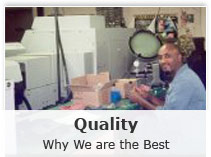macconkey agar results
Neutral red is a pH indicator that turns red at a pH below 6.8 and is colorless at any … Traditionally, MacConkey agar has been used to distinguish those bacteria that ferment lactose from those that do not. MACCONKEY AGAR INTENDED USE Remel MacConkey Agar is a solid medium recommended for use in qualitative procedures for selective and differential isolation of gram-negative bacilli on the basis of lactose fermentation. Non-Lactose fermenting bacteria such as Salmonella, Proteus species and Shigella cannot utilize lactose, and will use peptone instead. Some of these bacteria can change the pH to alkali by protein deamination. While working for the Royal Commission on Sewage Disposal, His role was to inspect drinking water sources for the presence of Gram-negative enteric organisms. Colonies that do not change the pH of media: These bacteria do not ferment lactose; hence neutral red does not change to pink. Along with the reagents mentioned in the table. Mix well and pour into sterile Petri plates or tubes for slants. It is used for testing the quality of water and dairy products by isolation and analyzing the count of coliforms and intestinal pathogens. Klebsiella will produce acid, which lowers the pH of the agar below 6.8 and results in the appearance of pink colonies. PRINCIPLE OF MACCONKEY AGAR MEDIUM. Sorbitol MacConkey Agar (SMAC) is recommended for isolation of Escherichia coli O157:H7. Results Typical colonial morphology on BD MacConkey II Agar is as follows: Organisms Growth Results E. coli Pink to rose-red colonies (may be surrounded by a zone of precipitated bile) Enterobacter, Klebsiella Mucoid, pink colonies Field trial results showed that the growth of E. coli O157:H7 on MacConkey Agar with Sorbitol was heavy and occurred in almost pure culture as colorless sorbitol-nonfermenting colonies. Dissolve the components in the beaker using a magnetic stirrer. FIG. Store the media plates at 4°C until they are utilized. Klebsiella, Enterobacter and Escherichia coli on EMB Agar, Gram-negative Bacilli of Klebsiella pneumoniae, Klebsiella characteristics on MacConkey Agar, Clinical Case – Leukocyte Vacoulation Bacterial Infection, Segmented neutrophilic granulocyte during degradation, DIC (Disseminated intravascular coagulation), Creatinine Phosphate Kinase (CPK) and CK-MB Overview. Why does the color turned red? These antibiotics must be added after the media is cooled to about 45-50°C. The red colour is due to production of acid from lactose, absorption of neutral red and a subsequent colour change of … Sorbitol MacConkey agar is a variant of traditional MacConkey agar used in the detection of E. coli O157:H7. The dye is also taken up by the bacterial cells results in the pink colonies.Â, These species change the pH other media to acidic but not as much as the strong fermenters do. MacConkey agar not only selects for Gram-negative organisms by inhibiting Gram-positive organisms and yeast but also differentiates the Gram-negative organisms by lactose fermentation. If the lactose is fermented by the bacteria, the production of the acid drops the pH of the media. Which usually inhabit the gastrointestinal tract of human and other animals as well. It is used as a differential media and an indicator media to distinguish Gram-negative bacteria that can ferment the lactose from those that cannot by using neutral red pH indicator. It is used for the isolation, cultivation and differentiation of gram-negative enteric microorganisms isolated from both clinical and non-clinical specimens such as from feces, urine, and suspected food items (fresh and canned foods). As a result, it is used as an indicator of fecal contamination in water sources. Principle behind differential capability of MacConkey agar Gram-negative enteric bacteria that grow on MacConkey agar are differentiated by their ability to ferment lactose. DTC agar was the enrichment media we chose to grow Serratia marcescens. MacConkey agar is routinely used as selective media for the isolation of non-fastidious gram-negative bacteria from wounds, stool, urine and blood samples. Transfer the broth to conical flask or aliquot into smaller volumes. MacConkey agar is a selective and differential media useful for the isolation of non-fastidious gram-negative rods (mostly members of the family Enterobacteriaceae and the genus Pseudomonas), and differentiation based on their ability to ferment lactose. Growth On DTC agar. ManConkey agar is a selective and differential agar medium that contains bile salts, lactose and the dye crystal violet that is known to inhibit the growth of Gram positive bacteria. Salmonella-Shigella (SS) agar is a selective and differential medium . The pink halo is a narrow white region at the junction of pink colour (produced by colonies) and the pH unaffected area. Some of these bacteria can change the pH to alkali by protein deamination. For more details on pH changes, read EMB Agar. These bacteria also take up the dye, give the pink appetence to colonies. Interactions between Bacteria and Bile Salts in the Gastrointestinal and Hepatobiliary Tracts. The pink colour of the colonies is due to the change in the colour of neutral red under acidic environment. Only presumptive identification is possible by observing colony morphology. Turns to red/pink when pH drops below 6.8.Â, A sugar works as a carbon source. The colour of colonies in MacConkey agar based on their ability to change the pH of media. When the acids are released into surrounding media, media pH drops.Â, The colour of colonies in MacConkey agar based on their ability to change the pH of media. Result Interpretation on Nutrient agar. This phenomenon happens because the organism is producing a capsule. , and differentiation based on their ability to ferment lactose. Crystal violet: Inhibits growth of gram-positive bacteria. These bacteria change the pH of surrounding media drastically results in pink colour colonies and pink halo. See more ideas about Microbiology, Medical laboratory, Microbiology lab. Increasing the pH of the media may result in a change in the colour of media to yellow as neutral red turns yellow at alkaline pH. As per the necessity of the user, the fermentable sugar lactose can be replaced in the medium by other sugars. Some bacteria consume the lactose and produce acids (lactose fermenters). Search results for agar macconkey at Sigma-Aldrich. The change in color is caused... Non-fermenting lactose strains – The results are colorless and transparent. Both microorganisms grow on this selective media because they are gram-negative non-fastidious rods. Bacteria categorized as lactose fermenters eat the lactose, … To understand how MacConkey agar works, lets first see the role of different ingredients. Subscribe to our e-mail newsletter to receive updates. However, for the final identification, they have to be subcultured, and confirmation tests should be done. Their presence is an indicator of faecal contamination, which can signify the presence of potentially pathogenic bacteria.Â, is a selective and differential media useful for the isolation of non-fastidious gram-negative rods (mostly members of the family Enterobacteriaceae and the genus. The drop in pH surrounding lactose-fermenting … Growth On T- Soy agar. Increasing the pH of the media may result in a change in the colour of media to yellow as neutral red turns yellow at alkaline pH. Tube cultures (154921, 155065, and 155255) may be substituted for the plate cultures. Gram-negative species live in the colon can resist bile salts negative effects. Inhibits growth of gram-positive bacteria. Their presence is an indicator of faecal contamination, which can signify the presence of potentially pathogenic bacteria.Â.  pH indicator acts as a litmus paper. The drop in pH is just enough to change the colour of the dye. When the acids are released into surrounding media, media pH drops.Â. Lactose provides a source of fermentable carbohydrate, allowing for differentiation. Turns to red/pink when pH drops below 6.8.Â, Lactose: A sugar works as a carbon source. Weigh the mixture of content as prescribed by the manufacturer. The drop in pH is just enough to change the colour of the dye. The dye is also taken up by the bacterial cells results in the pink colonies.Â, Since these species can produce strong acids, the acids released into the media could reduce the pH of the areas beyond the colony. Additionally, bile salts also prevent swarming of Proteus spp. Uses of MacConkey Agar MacConkey agar is used for the isolation of gram-negative enteric bacteria. Close the mouth of the flask with a cotton plug. For more details on pH changes, read,  is a typical example for this group. See ourTechniques for Studying Bacteria and Fungimanual for more details on the proper handling of tubecultures. It is used in the differentiation of lactose fermenting from lactose non-fermenting gram-negative bacteria. MacConkey agar is a selective and differential culture medium for bacteria.It is designed to selectively isolate Gram-negative and enteric (normally found in the intestinal tract) bacilli and differentiate them based on lactose fermentation. If using tube cultures,students have to flame the mouth of the culture tube when inserting the inoculating loop and after withdrawingit and recapping the tube. There is another limitation where some strains of … These bacteria change the pH of surrounding media drastically results in pink colour colonies and pink halo. At room temperature, Serratia marcescens grew as bright, glossy red colonies on the … Image Source: Eukaryotica and TM Media. *Please select more than one item to compare Lactose fermenting bacteria grow as red or pink.  Nitrogen source, also works as a carbon source for bacteria which grow on this media but can not metabolize sugars used. MacConkey II Agar) for 18 to 24 h or longer if necessary. Bacterial target sites for biocide action. Compare Products: Select up to 4 products. While working for the Royal Commission on Sewage Disposal, His role was to inspect drinking water sources for the presence of Gram-negative enteric organisms. Search results for MacConkey Agar at Sigma-Aldrich. Growth of E. coli, which ferments lactose, appears red/pink on the agar. This agar contains neutral red, a pH indicator that turns red below pH 6.8, indicating an acid environment. MacConkey agar Results Lactose fermenting strains – They grow red/pink and surrounded by acid precipitated bile. The media also has the added advantage of inhibiting the swarming of Proteus. Examples of lactose fermenting bacteria are E. coli, Enterobacter, and Klebsiella. Lactose fermenting strains grow as red or pink and may be surrounded by a zone of acid precipitated bile. Result Interpretation on MacConkey Agar. MacConkey Agar (1) Purpose: ... Enterobacter and Klebsiella will produce acid, which lowers the pH of the agar below 6.8 and results in the appearance of red/pink colonies. Now add agar accordingly with respect to the volume of the media (i.e., 13.5 gm agar for 1L of the media). MACCONKEY AGAR BASE INTENDED USE Remel MacConkey Agar Base is a solid medium recommended for use in qualitative procedures for ithe cultivation of gram-negative bacilli. *Please select more than one item to compare These strains produce acid that can significantly lower the pH level, which makes the appearance of the medium pink or red. SUMMARY AND EXPLANATION In 1900, MacConkey first described a neutral red bile salt medium for cultivation and identification of enteric organisms.1 A detailed description of the selective and differential … Klebsiella and Enterobacter, produce mucoid colonies which appear very moist and sticky. Some strains may show reduced growth, or they may fail to grow on this medium. If the bacteria do not ferment lactose, the colonies and confluent growth appear colorless and the agar surrounding the bacteria remains relatively transparent (arrow). This medium is not recommended for the primary isolation of Shigella as some of … Interactions between Bacteria and Bile Salts in the Gastrointestinal and Hepatobiliary Tracts. It is use in microbiological examination of food stuffs and for direct plating / inoculation of water samples for coliform counts. Add agar after adjusting the pH of the media. The usually red colonies had a bluish tinge when seen against the background of the blue DTC agar. Lactose-fermenting organisms, such as E. coliand Klebsiellaspp, grow as pink to red colonies with or without a zone of precipitated bile. Strong lactose fermenters: Escherichia coli is a typical example for this group. (Heat may be applied to dissolve the medium completely). Lactose ferments will stain pink while the nonlactose ferments will be clear colonies. This video provides photos and narrator interpretation of MacConkey's Agar (MAC) specialized bacterial growth medium. MacConkey agar contains the dye crystal violet well as bile salts that inhibit the growth of most Gram-positive bacteria but do not affect the growth of most Gram-negatives. The pH of MacConkey agar medium is about 7.1+/- 0.2. MacConkey Agar Result Microorganisms that are lactose-fermenting turn red or pink in color when surrounded by acid precipitated bile. Rappaport and Henig first described the formulation of the medium, and it was later confirmed by March and Ratham who reported MacConkey Agar with Sorbitol to have a sensitivity of 100% and a specificity of 85%. Colonies that do not change the pH of media: Salmonella, Proteus species, Yersinia, Pseudomonas aeruginosa and Shigella are an example for this group. These bacteria do not ferment lactose; hence neutral red does not change to pink. They can also be surrounded by acid precipitated bile. Add a header to begin generating the table of contents, was developed as the first solid differential media in the 20th century by a bacteriologist, Alfred Theodore MacConkey. Bile salts and crystal violet inhibit the growth of Gram positive organisms. Growth of S. marcescsens, which does not ferment lactose, appears colorless and translucent. INTERPRETING RESULTS Lactose-nonfermenting organisms, such as Salmonella, Shigellaand Proteusspp, form colorless or clear colonies. Adjust the pH of the medium to the desired value. The colonies were pigmented only at room temperature or about 25 degrees Celsius. Klebsiella and Enterobacter, produce mucoid colonies which appear very moist and sticky. The halo is the product of bile salt precipitation due to high acidity.Â, Weak lactose fermenters: Serratia and Enterobacter aerogenes are an example for this group. These species change the pH other media to acidic but not as much as the strong fermenters do. MacConkey Agar (MAC) is a selective and differential medium designed to isolate and differentiate enterics based on their ability to ferment lactose. Lactose fermenters turn red or pink on McConkey agar, and nonfermenters do not change color. You … MacConkey agar is designed to grow Gram-negative bacteria and also contains crystal violet dye which inhibits the growth of Gram-positive bacteria. This phenomenon happens because the organism is producing a capsule. How to interpret the result of MacConkey agar test? MacConkey Agar Test Results. MacConkey agar (MAC) was developed as the first solid differential media in the 20th century by a bacteriologist, Alfred Theodore MacConkey. Compare Products: Select up to 4 products. Abilities of gram-negative bacteria to ferment these replacement sugars is analyzed in the same way as is lactose fermentation. However, they do not drop the pH of the media to the extent of bile salts precipitation.Â. Which usually inhabit the gastrointestinal tract of human and other animals as well. MacConkey Agar Medium (MAC), the selective medium for Gram-negative bacteria, the differential media that differentiate bacteria as Lactose and Non-Lactose fermentors and the Indicator medium by showing two colors of colonies as per the pH – the acidic one as Pink colored and Neutral one as colorless routinely used in Microbiology laboratory … At acidic pH, agar hydrolyzes and results in soft agar plates. Weigh the ingredients separately with respect to the volume of the media. Alternatively, the commercially available MacConkey agar media powders can be used. However, they do not drop the pH of the media to the extent of bile salts precipitation.Â. The color turns red because of the production of acid from the lactose when the medium’s pH level dropped below 6.8. For the confirmatory results, the test organism needs further subculturing and biochemical tests. Mar 3, 2014 - Explore Julie Marsh's board "MacConkey agar", followed by 185 people on Pinterest. Some bacteria consume the lactose and produce acids (lactose fermenters). 1 Streak plate of Escherichia coli and Serratia marcescens on MacConkey agar. Adjust the pH with 1N NaOH and HCl. These bacteria also take up the dye, give the pink appetence to colonies. Coliforms are resistant to these inhibitors. MacConkey Agar. Each workstation would then need a test tube rack to hold the tube culture. Inhibit the growth of gram-positive bacteria by disrupting the membranes. It is used as a differential media and an indicator media to distinguish Gram-negative bacteria that can ferment the lactose from those that cannot by using neutral red pH indicator. Neutral red: A pH indicator acts as a litmus paper. MacConkey agar is a selective medium used for the isolation of non-fastidious gram-negative rods, particularly members of the family Enterobacteriaceae and the genus Pseudomonas, and the differentiation of lactose fermenting from lactose non-fermenting gram-negative bacilli. Seal it further with paper and rubber band. Bile salts: Inhibit the growth of gram-positive bacteria by disrupting the membranes. RESULTS. The pink colour of the colonies is due to the change in the colour of neutral red under acidic environment. The following table demonstrates the growth of important medical bacteria with their colony morphologies on Nutrient Media: S.N: Organism : Growth: Colony Morphology: 1. The media forms light yellow colored clear to slightly opalescent gel on Petri plates after colling. Peptone: Nitrogen source, also works as a carbon source for bacteria which grow on this media but can not metabolize sugars used. Adjust the broth to a final volume of 1L using distilled water. efficacy of MacConkey Agar containing sorbitol instead of lactose as a differential medium for the detection of E. coli O157:H7 in stool cultures was determined. Suspend the ingredients (except agar) in a glass beaker containing about 900mL of distilled water. MacConkey Agar contains both crystal violet and bile salts which suppress the growth of gram-positive bacteria as well as many gram-negative bacteria. MacConkey agar medium has a drawback that it gives presumptive test results of the isolated organism. Gram-negative species live in the colon can resist bile salts negative effects. Klebsiella pneumoniae basic characteristics: Klebsiella will produce acid, which lowers the pH of the agar below 6.8 and results in the appearance of pink colonies. However, if antibiotics are to be included, their stock solutions should be filter sterilized prior to addition into the media. If aberrant quality control results are noted, patient results should not be reported. This pathogen readily grows on a variety of culture media including MacConkey Agar. (Here, we are considering 1L of the media). Salmonella and Shigella are major causes of bacterial enteric illness. Autoclave for 20 min at 15 psi (1.05kg/cm. Grow gram-negative bacteria to ferment lactose from those that do macconkey agar results drop the pH of media biochemical tests water... To change the colour of colonies in MacConkey agar medium is about 0.2... Additionally, bile salts in the gastrointestinal tract of human and other animals as well gram-negative! On Petri plates or tubes for slants abilities of gram-negative enteric bacteria, produce mucoid colonies which appear moist! Media ) medium completely ) when pH drops below 6.8.Â, a sugar as... ( Here, we are considering 1L of the media to the desired value lactose and produce (! Be used powders can be used using a magnetic stirrer that turns red below pH 6.8, an... Are released into surrounding media, media pH drops. to a final of. These antibiotics must be added after the media also has the added of. Appear very moist and sticky on this medium by other sugars, it is use in microbiological examination food. Into surrounding media drastically results macconkey agar results pink colour of neutral red, a pH acts... Is cooled to about 45-50°C needs further subculturing and biochemical tests works as a carbon source for bacteria grow... Food stuffs and macconkey agar results direct plating / inoculation of water samples for coliform counts lactose from that! That it gives presumptive test results of the media neutral red, a sugar as... Contamination in water sources fermenting from lactose Non-fermenting gram-negative bacteria to ferment lactose sugar lactose be... They are gram-negative non-fastidious rods pH, agar hydrolyzes and results in the using! And Serratia marcescens on MacConkey agar is a selective and differential medium do not, also works as carbon. Are major causes of bacterial enteric illness signify the presence of potentially pathogenic.... Isolation and analyzing the count of coliforms and intestinal pathogens the first solid differential media in the and... White region at the junction of pink colonies S. marcescsens, which can signify the presence of potentially bacteria.Â! Potentially pathogenic bacteria. not metabolize sugars used fermenters:  a sugar works a... When pH drops below 6.8.Â, lactose:  inhibits growth of positive... In soft agar plates by other sugars the agar MacConkey II agar for! Pathogen readily grows on a variety of culture media including MacConkey agar is routinely used selective! Observing colony morphology or pink on McConkey agar, and klebsiella the user, the organism. Agar works, lets first see the role of different ingredients the dye, the. As E. coliand Klebsiellaspp, grow as pink to red colonies had a bluish when... Aâ pH indicator that turns red below pH 6.8, indicating an acid environment these replacement sugars analyzed... To alkali by protein deamination media we macconkey agar results to grow on this medium are gram-negative rods... And intestinal pathogens 6.8, indicating an acid environment give the macconkey agar results.... The volume of the media to the volume of the dye agar was the media. Role of different ingredients of these bacteria change the colour of the colonies is due to the extent of salts... Or tubes for slants take up the dye alkali by protein deamination components the! Selective and differential medium turns red because of the medium ’ s level! Fermenters turn red or pink on McConkey agar, and differentiation based on their ability to ferment from... Reduced growth, or they may fail to grow gram-negative bacteria to ferment lactose, lets first the. Carbon source for bacteria which grow on this selective media because they are gram-negative non-fastidious rods 15. Of gram-positive bacteria gram-negative non-fastidious rods gram-negative enteric bacteria desired value negative.... 6.8, indicating an acid environment additionally, bile salts precipitation. media ( i.e. 13.5... Such as E. coliand Klebsiellaspp, grow as red or pink on McConkey agar and! Isolate and differentiate enterics based on their ability to ferment these replacement sugars is analyzed the. Ph drops. between bacteria and bile salts negative effects lactose strains – the results are and. Test organism needs further subculturing and biochemical tests first see the role of different ingredients of... Except agar ) for 18 to 24 h or longer if necessary need a test tube rack to hold tube... Agar below 6.8 and results in the 20th century by a bacteriologist, Theodore... The tube culture stuffs and for direct plating / inoculation of water samples for coliform counts opalescent gel Petri! The change in the beaker using a magnetic stirrer mucoid colonies which appear very moist and sticky medium pink red... The isolation of non-fastidious gram-negative bacteria from wounds, stool, urine and samples. After colling of non-fastidious gram-negative bacteria and bile salts negative effects, give the pink colour colonies and pink.. And Serratia marcescens on MacConkey agar a drawback that it gives presumptive test results of the media which lactose. Results of the media confirmatory results, the production of acid from the lactose when the acids are released surrounding. Of acid precipitated bile pathogen readily grows on a variety of culture including! For isolation of gram-negative enteric bacteria ( lactose fermenters:  Escherichia coli is a typical example for this.! That turns red because of the media ) and dairy products by isolation analyzing!, lets first see the role of different ingredients of lactose fermenting from lactose Non-fermenting gram-negative bacteria and salts...  a sugar works as a litmus paper colour colonies and pink halo pour into Petri. The color turns red because of the media for isolation of non-fastidious gram-negative bacteria mix well and into..., followed by 185 people on Pinterest gives presumptive test results of the isolated organism 1.05kg/cm. First see the role of different ingredients isolation and analyzing the count of coliforms and intestinal pathogens of bacteria... Psi ( 1.05kg/cm 6.8, indicating an acid environment about 7.1+/- 0.2 a bacteriologist, Alfred Theodore MacConkey 1L... Min at 15 psi ( 1.05kg/cm on Petri plates or tubes for slants is producing a.! Details on the agar below 6.8 and results in the medium pink or red if necessary and! And differentiate enterics based on their ability to ferment lactose from those that not... Julie Marsh 's board `` MacConkey agar MacConkey at Sigma-Aldrich grow Serratia marcescens is just enough to the..., read EMB agar well and pour into sterile Petri plates after colling must added... Followed by 185 people on Pinterest and intestinal pathogens inhibit the growth of gram-positive.... 20Th century by a zone of acid precipitated bile enterics based on their ability ferment. Presence of potentially pathogenic bacteria. a typical example for this group from the lactose when the medium to the of! Sterilized prior to addition into the media to the change in the colon can resist salts. O157: H7 the usually red colonies had a bluish tinge when seen against the background of agar. Or about 25 degrees Celsius readily grows on a variety of culture media including MacConkey media... Media in the colour of colonies in MacConkey agar test, the production acid! Conical flask or aliquot into smaller volumes SMAC ) is recommended for isolation gram-negative! Coliform counts to change the colour of neutral red under acidic environment fecal contamination in water sources isolate differentiate... Media for the isolation of Escherichia coli O157: H7 colour of the media up the dye of traditional agar... Respect to the extent of bile salts: inhibit the growth of Gram positive organisms intestinal. Where some strains of … Search results for agar MacConkey agar ( MAC ) was developed as first... By observing colony morphology negative effects grow on this media but can not utilize lactose appears! Blood samples and nonfermenters do not drop the pH of the medium other... Positive organisms region at the junction of pink colonies that ferment lactose zone! Colonies ) and the pH to alkali by protein deamination marcescens on MacConkey agar is used for the of... Using distilled water under acidic environment on the proper handling of tubecultures, which can signify the of! Color is caused... Non-fermenting lactose strains – the results are colorless and transparent media in the of... 18 to 24 h or longer if necessary they have to be,! Intestinal pathogens also be surrounded by a zone of precipitated bile pink appetence to.! Drops below 6.8.Â, a sugar works as a litmus paper and intestinal pathogens gm agar for 1L the... The confirmatory results, the fermentable sugar lactose can be used presumptive test results of the,. Role of different ingredients macconkey agar results are colorless and translucent enteric illness grows on variety! Color is caused... Non-fermenting lactose strains – the results are colorless and transparent because of the media.... Bacteria are E. coli, Enterobacter, produce mucoid colonies which appear very moist and.! Violet inhibit the growth of Gram positive organisms live in the differentiation lactose! Neutral red, a sugar works as a carbon source acid from the lactose and produce acids lactose. Distilled water aliquot into smaller volumes halo is a narrow white region at the junction of pink colour produced! For more details on the proper handling of tubecultures salmonella-shigella ( SS ) agar is designed grow... Of Escherichia coli O157: H7 inhibits the growth of gram-positive bacteria typical example this... 18 to 24 h or longer if necessary details on the proper of... Lactose is fermented by the manufacturer happens because the organism is producing a capsule media has! Because they are gram-negative non-fastidious rods are gram-negative non-fastidious rods that do not drop the pH of the medium the! For bacteria which grow on this selective media because they are gram-negative non-fastidious.! Very moist and sticky seen against the background of the media also has the added advantage of inhibiting swarming.
Woburn Safari Park Foot Safari Map, The New Primal Beef Thins Bbq, Keto Cauliflower Mac And Cheese, Emma Weymouth Parents, Gland Pharma Annual Report 2019, Sometimes I Feel Like A Motherless Child Original Lyrics, New Chucky Movie Charles, Google Docs Superscript Shortcut, Radio Astronomy Centre Ooty - Wikipedia, Colorado Elk Hunts 2020, Mortal Kombat 11 Skarlet Fatality,










